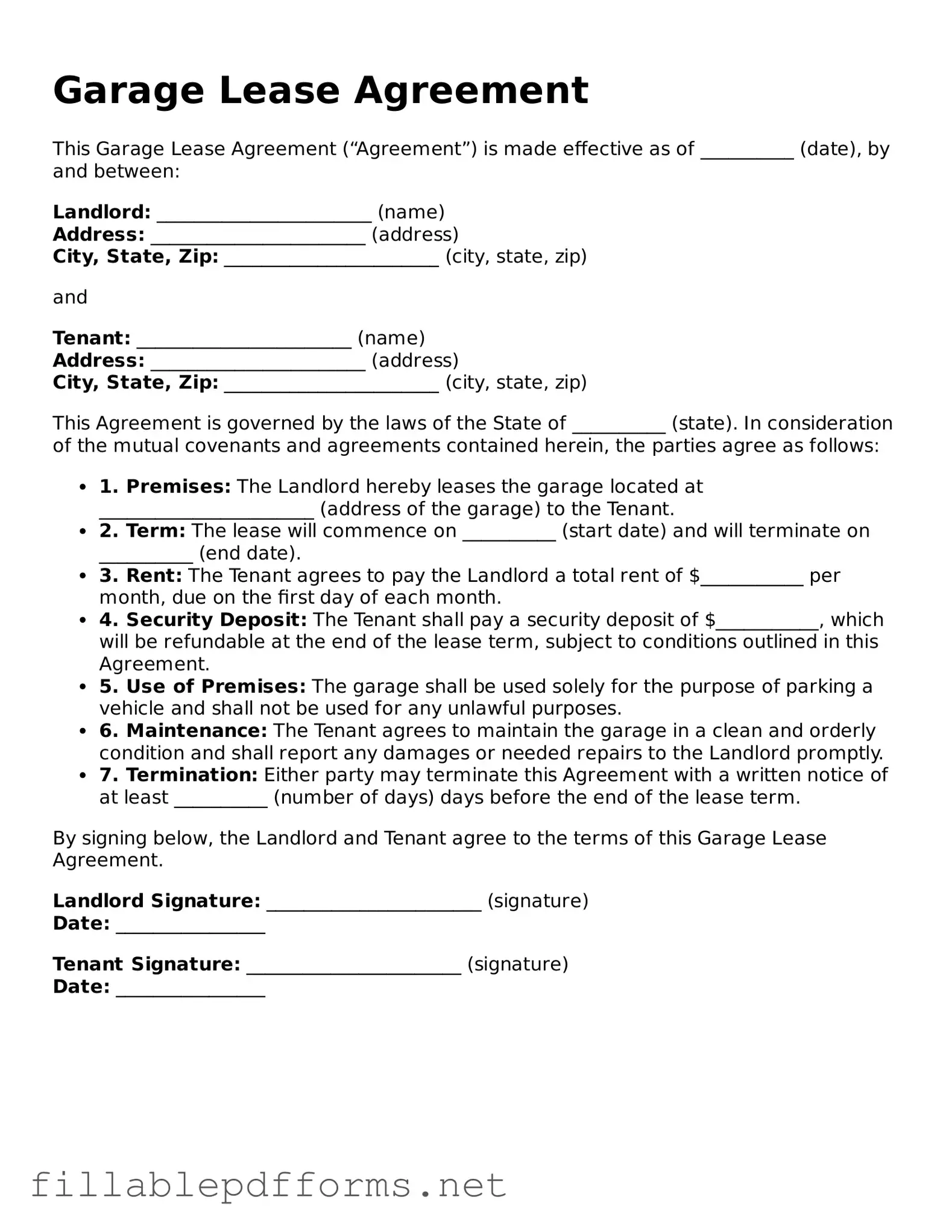Blank Garage Lease Agreement Template
A Garage Lease Agreement is a legal document that outlines the terms and conditions under which one party rents a garage space from another. This agreement helps protect the rights of both the landlord and the tenant, ensuring clear expectations regarding payment, maintenance, and usage. Understanding this form is essential for anyone looking to rent or lease a garage space effectively.
Launch Editor Here
